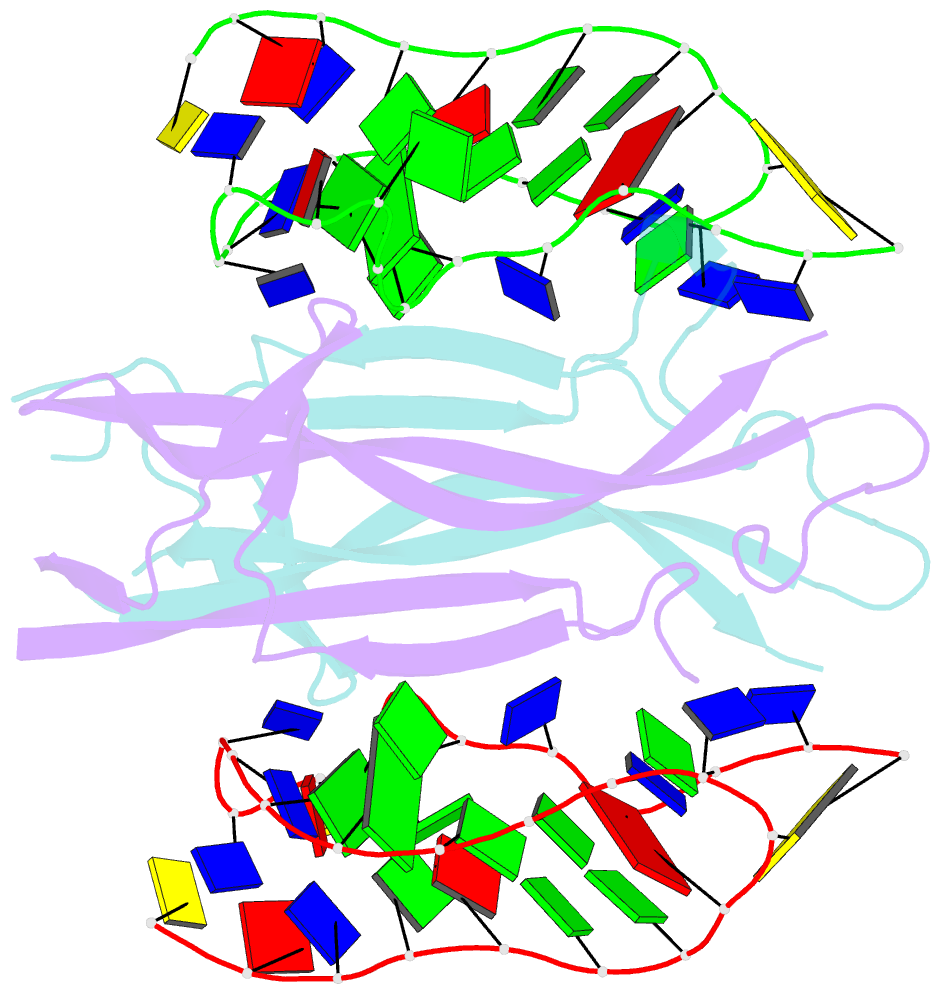Summary information and primary citation
- PDB-id
- 4zbn; SNAP-derived features in text and JSON formats;
DNAproDB
- Class
- immune system-DNA
- Method
- X-ray (2.447 Å)
- Summary
- Non-helical DNA triplex forms a unique aptamer scaffold for high affinity recognition of nerve growth factor
- Reference
- Jarvis TC, Davies DR, Hisaminato A, Resnicow DI, Gupta S, Waugh SM, Nagabukuro A, Wadatsu T, Hishigaki H, Gawande B, Zhang C, Wolk SK, Mayfield WS, Nakaishi Y, Burgin AB, Stewart LJ, Edwards TE, Gelinas AD, Schneider DJ, Janjic N (2015): "Non-helical DNA Triplex Forms a Unique Aptamer Scaffold for High Affinity Recognition of Nerve Growth Factor." Structure, 23, 1293-1304. doi: 10.1016/j.str.2015.03.027.
- Abstract
- Discerning the structural building blocks of macromolecules is essential for understanding their folding and function. For a new generation of modified nucleic acid ligands (called slow off-rate modified aptamers or SOMAmers), we previously observed essential functions of hydrophobic aromatic side chains in the context of well-known nucleic acid motifs. Here we report a 2.45-Å resolution crystal structure of a SOMAmer complexed with nerve growth factor that lacks any known nucleic acid motifs, instead adopting a configuration akin to a triangular prism. The SOMAmer utilizes extensive hydrophobic stacking interactions, non-canonical base pairing and irregular purine glycosidic bond angles to adopt a completely non-helical, compact S-shaped structure. Aromatic side chains contribute to folding by creating an unprecedented intercalating zipper-like motif and a prominent hydrophobic core. The structure provides compelling rationale for potent inhibitory activity of the SOMAmer and adds entirely novel motifs to the repertoire of structural elements uniquely available to SOMAmers.





